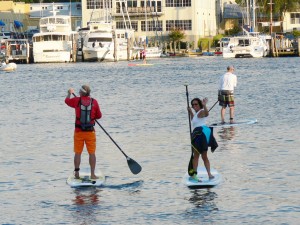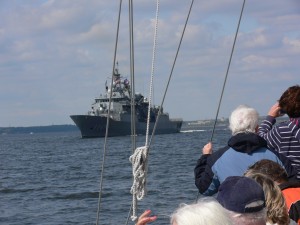This past weekend was the 200th anniversary of the Battle of Baltimore which took place Sept 12 – 13, toward the end of the War of 1812. It was one of the most significant battles of the war. Francis Scott Key witnessed the event from on board a British warship while trying to secure the release of the non combatant, Dr Beanes. He was so inspired by the event that he wrote the poem “The Defense of Baltimore” and set it to a popular English drinking song, “Anacreon in Heaven”. It was immediately a success as a patriotic song, but didn’t officially become our National Anthem until 1931.
We took Woodwind with 36 guests to attend the last event of the Star Spangled Sailabration. After an exciting sail up to the mouth of the Patapsco River, we then motored to see the vessels leave Baltimore Harbor. The first vessels leaving the harbor were active duty Navy vessels from the US and various other nations. What was interesting and left an immediate impression was what we did not see: There were no large guns or cannon. Several years ago I was on the Battleship Massachusetts (now a museum piece). One of the docents said that her 16 inch guns (diameter of the shells fired) could accurately hit a target 20 miles away. I asked , with that accuracy, why would you stop using battleships. He said that today, with our modern missiles and other weaponry, in the unlikely event that you even see the enemy, one of you will be vaporized in less than 15 seconds! Contrast that with the naval battles of 1812. The range of the best guns was an inaccurate range of 2 miles and vessels did not open with full fire power until normally only yards away. In fact I related to our guests that in the battle between the USS Constitution (Old Ironsides) and the HMS Guerriere, several of the broadsides (firing all cannon on one side at the same side) took place at a range of 15 yards! The Constitution pumped the cumulative weight of over 400 pounds of metal with each broadside. The two vessels slugged it out for two and a half hours until the Guerriere was dis-masted and surrendered.
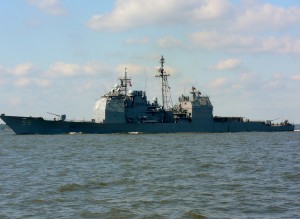
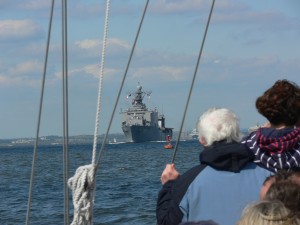
- USS Oak Hill (LSD 51) is a Harpers Ferry-class dock landing ship of the U.S. Navy.
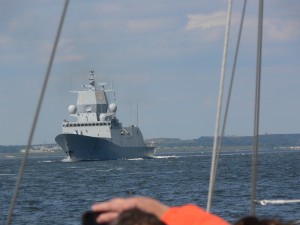
HNoMS Fridtjof Nansen (F310) is a frigate of the Royal Norwegian Navy and the lead ship of the Fridtjof Nansen-class of warships. The ship’s namesake, Fridtjof Nansen (1861-1930), was a Norwegian explorer, scientist, diplomat, humanitarian and Nobel Peace Prize laureate. 
HMCS Athabaskan (DDG 282) is an Iroquois-class (sometimes referred to as Tribal-class) destroyer of the Royal Canadian Navy (RCN). - TCG Kemalreis (F-247) is a Salih Reis-class frigate of the Turkish Navy.
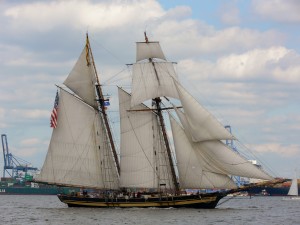
The Pride of Baltimore II and the Lynx are the only 2 vessels that replicate what would have been typical of the smaller warships used during the War of 1812. They were often called Baltimore Clippers. Built for speed, not cargo, they are schooner rigged. Their advantage against often larger square rigged vessels would have maneuverability and speed. Schooners can point higher into the wind and if faced with a large frigate like the Guerriere, would have escaped to windward. The British were impressed with the design and when they could capture these vessels, would re-man them with their crews and use them against us.
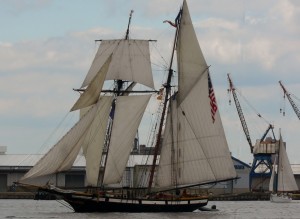
In the photo of Lynx, she is sailing downwind. When she sailed up wind, the split lower sail would be furled and she would have used her fore, like in the photo of the Pride.
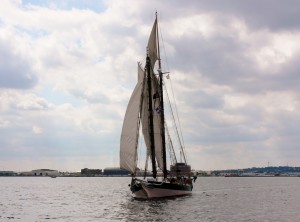
Lady Maryland is a schooner that would have been used for cargo in the mid 1800’s. She is much wider in the beam. The green and pink hull was very typical of the colors used to paint vessels at that time. Her rig is much simpler than the Pride for she would have had minimal crew.
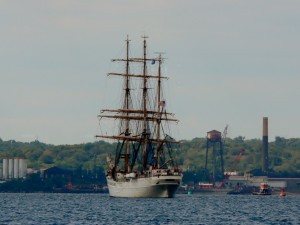
The USCG Eagle is the only square rigged ship that is owned by our military. She is a training ship for the United States Coast Guard. She was built in Germany in 1936 and we obtained her as part of reparations from World War II. Cargo ships like this were common for trans ocean passages during the mid to late 1800’s. At the same time schooners like Lady Maryland were used for cargo coast wise. The reason schooners were used for coast wise commerce is because the winds along the coast are unpredictable and windward sailing was common. Trans ocean sailing was planned to make use of the predictable trade winds where down wind sailing is most common.
Finally, back in the harbor of Annapolis, I was able to capture the beautiful schooner Adventurer, built for pleasure in 1928.
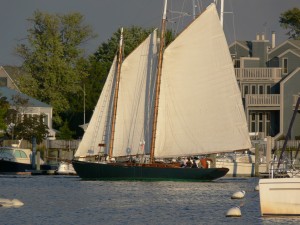
Just as I was about to leave Woodwind, I hear a shout from my daughter Jen (uhmm, that’s Captain Jen) who is on a pleasure cruise on a paddle board with some of her friends.
